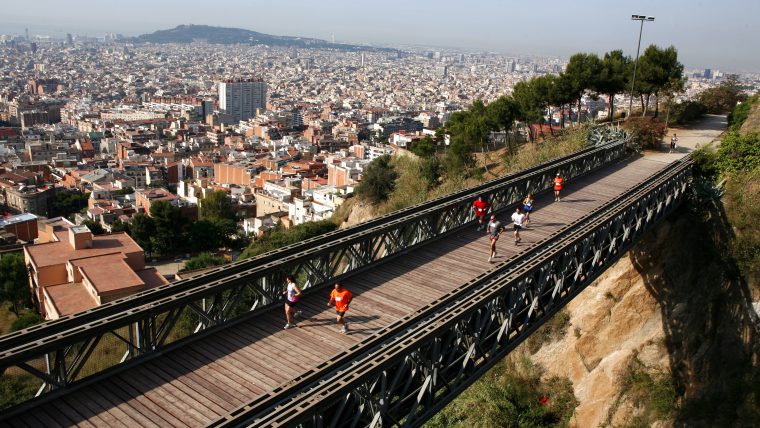
Almost 70 metres in length, the Mühlberg bridge was put up to fill the gap in the Rovira hill’s wall caused by the exploitation of its quarries. The area’s limestone has been extracted to produce lime and stones for building work ever since the mid 19TH century, a process that has left behind large holes in the hill.
The quarries of rovira hill
One of the distinguishing features of the Can Baró neighbourhood is its quarries, which were worked on intensely for almost the entire 20th century. So many years of exploitation caused huge holes in Rovira Hill, one of which – located at the end of Carrer Mühlberg – cut off the path between the two sides of the neighbourhood. The Mühlberg bridge closed this gap in 1991 and has been providing spectacular views of the city ever since.
Before the dinosaurs
Rovira hill (261 metres in height) is one of the seven hills at the foot of Collserola along its seafacing mountain range, in other words, Barcelona. It is part of Three Hills group, along with Coll hill (249 m) and Carmel hill (267 m), which make up the Coastal Range system created over 250 million years ago, during the Palaeozoic era, before the appearance of the first dinosaurs.




Urban spaces
-
Horta-Guinardó
Can Baró
- Address:
- C Mühlberg, 100
- Districte:
- Horta-Guinardó
- Neighborhood:
- Can Baró
- City:
- Barcelona
If you would like to make a correction related to this activity...
LET US KNOW
